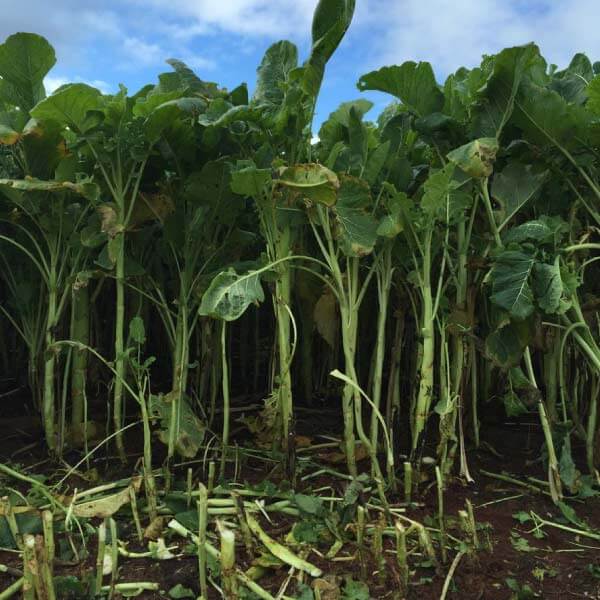Kale is normally used as a winter feed crop. With a deep root system; it has good drought tolerance.
A late autumn/winter feed that delivers a single graze option in March to June. Generally the taller the kale, the higher the dry matter yield, but leaf-to-stem ratio does fall with taller kales.
Most kale cultivars show good levels of aphid and clubroot tolerance. Kale has a deep root system and therefore good drought tolerance once established and can be grazed at any time.
Under Australian conditions Kale is ideally grown in paddocks with access to irrigated water or effluent, as soil moisture is the main cause of yield variation.
KALE - OUR TOP FORAGE SELECTIONS
Regal Kale
Regal® is an intermediate height kale which has been bred for a high leaf percentage for better utilisation, in conjunction with a high total yield in order to maximize stock productivity.
Extensively trialed prior to commercial release, Regal has been proven to perform well against other kales in the market.
COLEOR KALE
Coleor is a high yielding, leafy, diploid Kale of short to medium height, very high leaf to stem ratio and very good winter hardiness.
Of particular note is Coleor's high dry matter digestibility and metabolisable energy content which means potentially higher livestock performance.
Ready to find out more?
Drop us a line today for more agronomy information
Agronomy / Variety Management
Kale is normally sown from mid-October to December to provide feed from mid-autumn through winter. This is an erect plant, with the stem providing a high proportion of the feed on offer.
Feed value is usually somewhere between that of turnips and rape, and high yields are possible. Kale keeps well in the cooler months and grazing time can be flexible. There is re-growth potential if 100-150mm of stem is left, although the first grazing constitutes the main target yield. Most varieties are quite tall and suit cattle only, whilst there are shorter types that suit sheep.
Yield and Quality Expectation
The yield will vary depending on soil type, fertility, and available moisture. Soil moisture is usually the main cause of yield variation - in some areas it can be the lack of moisture during summer, while water logging can be a problem in wetter areas. Regardless of cultivar, yields as low as 6-8 t DM/ha can result if kale is grown on light, infertile soils, or experiences water stress. Kale has no ripening requirements, but maximum yield is around 150 to 220 days.
What is the energy value of kale?
Kale leaves and the top third of kale stems are generally high in energy, and will test at an ME of 12 MJ/kg DM or more. Lower portions of the kale stems have reduced ME, with feed quality dropping off as the stem gets closer to the ground. All stems will become increasingly hard and fibrous with time.
What are the main insect pests?
The main insect pests are springtails, diamondback moth, white butterfly, and aphids.









